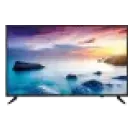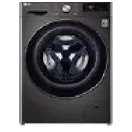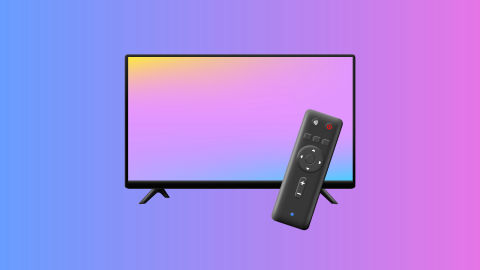Browse a wide range of TVs on Bajaj Mall. Alternatively, visit our partner stores to discover a wide selection of various renowned brands. Visit the nearest Bajaj Finserv partner store and explore the wide range of options available. Select the TV that suits your preferences and convert its cost into Easy EMIs. You can choose to repay it in a convenient tenure of up to 60 months. This financing solution from Bajaj Finserv is available on 1 million products.
3 min
5-Feb-2025
Choosing between SDR and HDR depends on the viewing experience that you prefer. SDR (Standard Dynamic Range) offers decent picture quality but lacks the depth and vibrancy needed for modern visuals. On the other hand, HDR (High Dynamic Range) enhances brightness, contrast, and colour accuracy, making every scene more lifelike.
Browse a wide range of TVs on Bajaj Mall. Alternatively, visit our partner stores to discover a wide selection of various renowned brands. Visit the nearest Bajaj Finserv partner store and explore the wide range of options available. Select the TV that suits your preferences and convert its cost into Easy EMIs. You can choose to repay it in a convenient tenure of up to 60 months. This financing solution from Bajaj Finserv is available on 1 million products.
Browse a wide range of TVs on Bajaj Mall. Alternatively, visit our partner stores to discover a wide selection of various renowned brands. Visit the nearest Bajaj Finserv partner store and explore the wide range of options available. Select the TV that suits your preferences and convert its cost into Easy EMIs. You can choose to repay it in a convenient tenure of up to 60 months. This financing solution from Bajaj Finserv is available on 1 million products.
What is dynamic range
Dynamic range refers to the difference between the brightest whites and the darkest blacks that a display can produce. A higher dynamic range ensures that details are preserved in both the brightest highlights and the deepest shadows, creating a more lifelike viewing experience. This is particularly important when watching movies or playing video games, as it enhances depth and contrast, making visuals more immersive.
When comparing HDR vs non-HDR TV, the difference in dynamic range becomes evident. HDR (High Dynamic Range) TVs offer a wider range of brightness levels, ensuring that bright areas do not appear washed out and dark areas retain their depth. In contrast, nonHDR TVs have a limited dynamic range, often leading to a loss of detail in extreme lighting conditions. This means that in a dark scene, you might struggle to see subtle details, while in an overly bright scene, highlights may appear overexposed.
If you are looking for a TV that can deliver more realistic visuals, opting for one with high dynamic range capabilities is a wise choice. It ensures that you enjoy content with enhanced clarity, better colours, and superior contrast, making a noticeable difference in your overall viewing experience.
When selecting a TV, considering HDR support can significantly impact picture quality. HDRcompatible televisions use advanced image-processing techniques to display a wider colour gamut and higher peak brightness, resulting in more vibrant and lifelike visuals. Streaming platforms like Netflix, Prime Video, and Disney+ offer HDR content, which, when viewed on a compatible screen, enhances the overall cinematic experience.
HDR formats such as HDR10, Dolby Vision, and HLG cater to different content standards, providing flexibility in how content is rendered. Investing in an HDR TV ensures that you can enjoy the latest movies, sports, and games with superior depth, realistic colours, and enhanced contrast, making every frame more engaging and visually stunning.
Modern LED TV models support HDR, ensuring that users can experience superior picture quality. If you are looking for enhanced visuals with more defined shadows and highlights, opting for an HDRenabled television is a great choice.
Additionally, the overall brightness, contrast, and colour depth of the picture can help determine the format. HDR content appears more vibrant, with deep blacks and bright highlights, whereas SDR content may look flatter with less contrast. If you are watching through external devices like gaming consoles or Bluray players, ensuring that they support HDR playback is essential.
The type of display you use also matters. Different types of television offer varying levels of HDR support. While OLED and QLED TVs provide exceptional HDR performance, older LCD and LED models may not deliver the same results. Checking your device specifications can help you confirm whether you are experiencing content in its best possible quality.
Visit the nearest Bajaj Finserv partner store and explore the wide range of options available. Select the TV that suits your preferences and convert its cost into Easy EMIs. You can choose to repay it in a convenient tenure of up to 60 months. This financing solution from Bajaj Finserv is available on 1 million products.
When comparing HDR vs non-HDR TV, the difference in dynamic range becomes evident. HDR (High Dynamic Range) TVs offer a wider range of brightness levels, ensuring that bright areas do not appear washed out and dark areas retain their depth. In contrast, nonHDR TVs have a limited dynamic range, often leading to a loss of detail in extreme lighting conditions. This means that in a dark scene, you might struggle to see subtle details, while in an overly bright scene, highlights may appear overexposed.
If you are looking for a TV that can deliver more realistic visuals, opting for one with high dynamic range capabilities is a wise choice. It ensures that you enjoy content with enhanced clarity, better colours, and superior contrast, making a noticeable difference in your overall viewing experience.
What is HDR
HDR (High Dynamic Range) is a display technology designed to improve contrast, brightness, and colour accuracy, making visuals appear more realistic. It enhances the details in both bright and dark areas of an image, ensuring a richer and more immersive viewing experience. Unlike standard displays, HDRsupported screens can produce deeper blacks and brighter highlights, reducing the loss of detail in extreme lighting conditions.When selecting a TV, considering HDR support can significantly impact picture quality. HDRcompatible televisions use advanced image-processing techniques to display a wider colour gamut and higher peak brightness, resulting in more vibrant and lifelike visuals. Streaming platforms like Netflix, Prime Video, and Disney+ offer HDR content, which, when viewed on a compatible screen, enhances the overall cinematic experience.
HDR formats such as HDR10, Dolby Vision, and HLG cater to different content standards, providing flexibility in how content is rendered. Investing in an HDR TV ensures that you can enjoy the latest movies, sports, and games with superior depth, realistic colours, and enhanced contrast, making every frame more engaging and visually stunning.
HDR vs SDR compared
The difference between HDR and SDR (Standard Dynamic Range) lies in their ability to display brightness, contrast, and colours. HDR delivers deeper blacks, brighter highlights, and a more extensive colour range, while SDR has a more limited display capability. Here is a comparison to help understand the difference:| Feature | HDR | SDR |
| Brightness levels | Higher peak brightness, up to 1000 nits or more | Typically limited to 300500 nits |
| Colour gamut | Wider range with more accurate and vivid colours | Limited colour spectrum, sometimes appearing dull |
| Contrast ratio | Higher contrast for better depth and realism | Lower contrast, making scenes appear flatter |
| Content compatibility | Requires HDRcompatible content and display | Works with all standard content |
| Viewing experience | More immersive and lifelike visuals | Less depth and realism |
Modern LED TV models support HDR, ensuring that users can experience superior picture quality. If you are looking for enhanced visuals with more defined shadows and highlights, opting for an HDRenabled television is a great choice.
How to know if you are watching content in SDR or HDR
Identifying whether you are watching content in SDR or HDR can enhance your viewing experience, ensuring that you make the most of your display’s capabilities. One of the easiest ways to check is through the settings of your TV or streaming platform. Most modern televisions indicate the active display mode when HDR content is being played. Streaming platforms like Netflix and Disney+ also label HDRsupported content, so if your device is compatible, it will automatically switch to the correct mode.Additionally, the overall brightness, contrast, and colour depth of the picture can help determine the format. HDR content appears more vibrant, with deep blacks and bright highlights, whereas SDR content may look flatter with less contrast. If you are watching through external devices like gaming consoles or Bluray players, ensuring that they support HDR playback is essential.
The type of display you use also matters. Different types of television offer varying levels of HDR support. While OLED and QLED TVs provide exceptional HDR performance, older LCD and LED models may not deliver the same results. Checking your device specifications can help you confirm whether you are experiencing content in its best possible quality.
Visit the nearest Bajaj Finserv partner store and explore the wide range of options available. Select the TV that suits your preferences and convert its cost into Easy EMIs. You can choose to repay it in a convenient tenure of up to 60 months. This financing solution from Bajaj Finserv is available on 1 million products.
Explore HDR vs non-HDR TV on EMI with Bajaj Finserv
If you want a quality HDR or nonHDR TV, check out the diverse range of options available on Bajaj Mall. After reviewing the specifications, visit a Bajaj Finserv partner store to select your ideal model. With easy financing options, you can bring home your preferred TV without straining your budget. Additionally, you can opt for a flexible repayment tenure, ensuring affordable EMIs. Bajaj Finserv also provides financing solutions for various electronics.Benefits of purchasing an HDR vs non-HDR TV with Bajaj Finserv
- Budget-friendly pricing: Get competitive prices on HDR and non-HDR TVs at Bajaj Finserv partner stores, making your purchase more affordable.
- Flexible EMIs: Enjoy hassle-free payments by spreading the cost of your TV over convenient EMIs with Bajaj Finserv.
- Zero down payment: Select HDR and non-HDR TVs come with a zero down payment option, allowing you to buy now and pay later.
- Wide selection: Choose from an extensive range of HDR and nonHDR TVs across multiple partner stores to find the best fit for your needs.
- Free home delivery: Get the convenience of complimentary doorstep delivery on select models, ensuring a smooth shopping experience.
Televisions
TVs by size
TVs by budget
TV comparisons
Bajaj Finserv App for all your financial needs and goals
Trusted by 50 million+ customers in India, Bajaj Finserv App is a one-stop solution for all your financial needs and goals.
You can use the Bajaj Finserv App to:
Apply for loans online, such as Instant Personal Loan, Home Loan, Business Loan, Gold Loan, and more.
You can use the Bajaj Finserv App to:
Apply for loans online, such as Instant Personal Loan, Home Loan, Business Loan, Gold Loan, and more.
- Explore and apply for co-branded credit cards online.
- Invest in fixed deposits and mutual funds on the app.
- Choose from multiple insurance for your health, motor and even pocket insurance, from various insurance providers.
- Pay and manage your bills and recharges using the BBPS platform. Use Bajaj Pay and Bajaj Wallet for quick and simple money transfers and transactions.
- Apply for Insta EMI Card and get a pre-approved limit on the app. Explore over 1 million products on the app that can be purchased from a partner store on Easy EMIs.
- Shop from over 100+ brand partners that offer a diverse range of products and services.
- Use specialised tools like EMI calculators, SIP Calculators
- Check your credit score, download loan statements, and even get quick customer support—all on the app.
Frequently asked questions
Is SDR better than HDR?
SDR (Standard Dynamic Range) is the traditional display format, offering decent brightness and contrast, but it lacks the depth and vibrancy of HDR (High Dynamic Range). HDR delivers enhanced brightness, deeper blacks, and richer colours, making it the superior choice for a more immersive viewing experience. However, SDR is still widely supported and may be sufficient for casual viewing.
Is 4K resolution classified as HDR or SDR?
4K resolution refers to the number of pixels on a screen, while HDR relates to brightness, contrast, and colour accuracy. A 4K TV can support either SDR or HDR, depending on its technology and content compatibility. While 4K enhances sharpness, pairing it with HDR ensures richer colours and better contrast, significantly improving picture quality.
Does Netflix stream content in HDR or SDR?
Netflix supports both SDR and HDR, depending on the content and device compatibility. Many of its premium shows and movies are available in HDR formats like Dolby Vision and HDR10, offering superior visual quality. To watch HDR content, you need a compatible TV and a Netflix plan that supports Ultra HD streaming.
Does YouTube support SDR or HDR content?
YouTube offers both SDR and HDR content, allowing creators to upload videos in either format. HDR videos provide better contrast, colour depth, and brightness, but you need an HDR compatible LED TV or device to experience the enhanced visuals. SDR videos remain widely available for standard displays.
Is SDR better than HDR?
SDR (Standard Dynamic Range) is the traditional display format, offering decent brightness and contrast, but it lacks the depth and vibrancy of HDR (High Dynamic Range). HDR delivers enhanced brightness, deeper blacks, and richer colours, making it the superior choice for a more immersive viewing experience. However, SDR is still widely supported and may be sufficient for casual viewing.
Show More
Show Less











